There are few things as frustrating as a seemingly never-ending dryer cycle, plus it always feels wasteful to me. Alas, some things follow you whether you are using gas or electricity, as covered by the first eight reasons. However, several gas-specific problems can cause long run times.

Reasons gas dryers struggle to dry clothes:
- Clothes too wet
- Overloaded drum
- Clogged vents/ducts
- Dryer belt slipping/broken
- Lack of makeup air
- Malfunctioning cycling thermostat
- Blown/faulty thermal fuse
- Blower malfunctioning
- Ignitor malfunctioning
- Intermittent gas supply
- Poor gas supply
- Poor combustion air supply
1. Clothes Were Too Wet
Despite being designed to dry clothing, your clothes can be too wet for the dryer. If your clothes are dripping, a regular program might not be sufficient.
Dryers evaporate water from clothing with hot air that is blown through the drum. The more water there is to evaporate, the more air needs to be cycled through the barrel.
Not only will it take a long time, but dripping wet clothes can damage your dryer since it is full of mechanical and moving parts.
The longer these must operate and move (not to mention the loads are heavier), the more wear they are subject to. This will shorten the lifespan of the dryer and will increase the need for repairs, servicing, and replacement.
You need to spin or ring the items out beforehand.
2. Overloaded Drum
An overloaded drum can also increase the run time of your dryer.

A large part of the drying process is that the clothes need to come into contact with the warm air. Therefore, if your drum is filled to the brim, you will need to run the dryer again to address damp patches.
There needs to be space for the items to be aerated to dry properly.
Another thing to consider with overloading the drum is the machine’s weight capacity. If you are over the weight limit, the dryer mechanism won’t be able to rotate easily. Again, this impairs the aeration and circulation of the hot air.
3. Clogged Vents/Ducts
Clogged vents and ducts are the root of many dryer issues. This occurs because lint and dirt can gather in the exhaust system. There are ways to minimize the blockages by regularly cleaning your lint filters and preventing and addressing damage to ducting.
However, you still need to clean the ducts out once or twice a year. Otherwise, you will run into problems with the function and safety of the dryer.
Air is pushed through the dryer and into the vent. The exhausting of air is important to allow more air into the barrel to continue the drying process. A clogged vent will block up the entire airflow system of the appliance.
4. Dryer Belt Is Slipping or Broken
Your dryer belt wraps around the drum and is connected to the motor pulleys, which rotate the belt and turn the barrel.
If your belt is loose or snapped, the drum is not moving properly. This means there is no tumbling to help the air reach the items fully, which contributes to complete drying.
Dryer belts can stretch over time or if you continuously overload the drum. It might even have been incorrectly connected to the pulleys after a service or replacement.
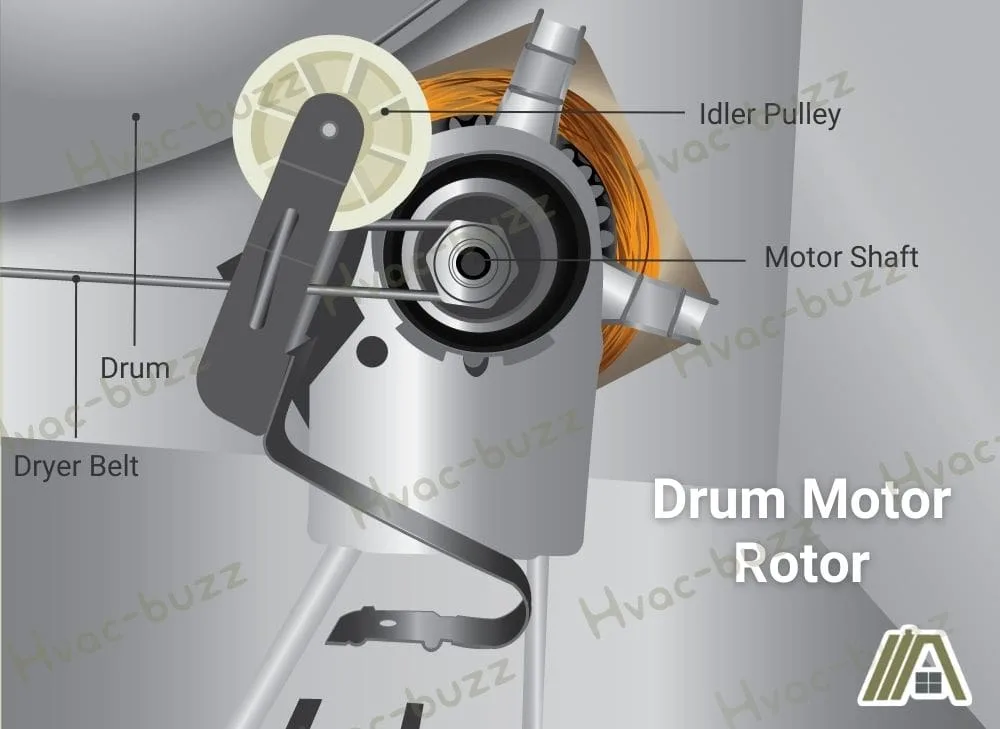
A loose belt will slip, and you can often identify this problem by the thumping sound it creates.
They can also snap as they age, which means that your drum won’t move at all. However, you should check the dryer if your belt keeps breaking, as this can indicate a problem somewhere.
5. Nearby Exhaust Systems Don’t Have Makeup Air
When your dryer shares space with an exhaust system that doesn’t have makeup air, you can end up with a dryer that needs longer to be effective.
Makeup air is the air supplied to replace what is removed by an exhaust system. It is essential to have sufficient makeup air where needed because it can create a negative air pressure system.
In this case, air will be drawn from nearby space to balance the air system. This can end up causing backdrafting from your dryer, which means the dryer works longer and harder to provide enough hot air for the program.
It can also be dangerous with a gas dryer as combustion gases will be pulled out with the rest of the air, and it can interfere with complete combustion for the dryer and other gas appliances.
6. Cycling Thermostat Is Malfunctioning
A dryer has a cycling thermostat, a sensor that monitors the temperature of the air in the drum to maintain a steady temperature throughout the cycle. This prevents the air from getting too hot or cold while the dryer runs.
So, this thermostat sends signals to the control board to turn the ignitor and gas on and off in a gas dryer.
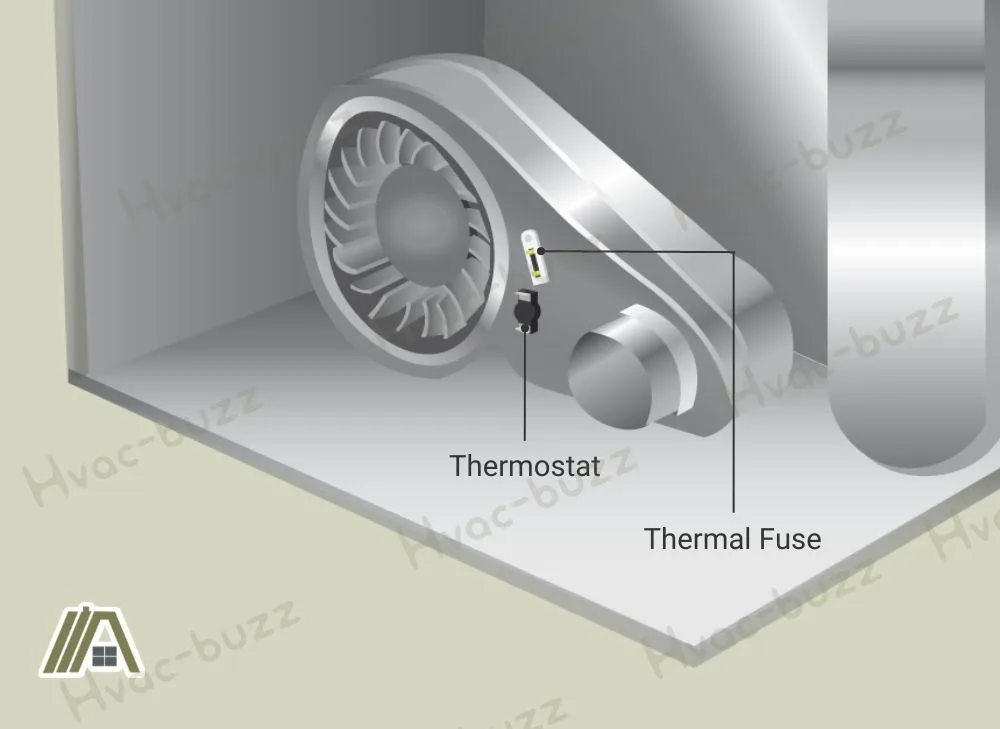
If this sensor is malfunctioning, it may be sensing a higher temperature than it really is. Therefore, the heat may be switched off inappropriately, so the dryer isn’t getting hot enough to function efficiently.
7. Thermal Fuse Has Blown or Is Faulty
The thermal fuse is another heat safety feature in the dryer to prevent it from overheating and becoming a danger. This fuse will blow if the dryer gets too hot, shutting off the motor so that the dryer cannot run.
A faulty fuse may not allow the dryer to heat if it is misreading the heat levels, causing the heat dryer to cut in and out as the component sends mixed signals to the controls.
I recommend checking the state of your dryer vent. If the vent is blocked, air is not moving through the appliance correctly, which can cause heat to build inside. This can trigger the thermal fuse.
8. The Blower Is Not Working Properly
The blower is an essential part of the airflow system in your dryer. This component pulls air into the machine, where it passes by the heat source. After that, the air is pushed into the drum, where it can evaporate moisture and leave the machine.
So, you can see that the blower is key for drying your clothing. If your blower is blocked or broken, this can impact how much or how well air is being cycled through the drum.
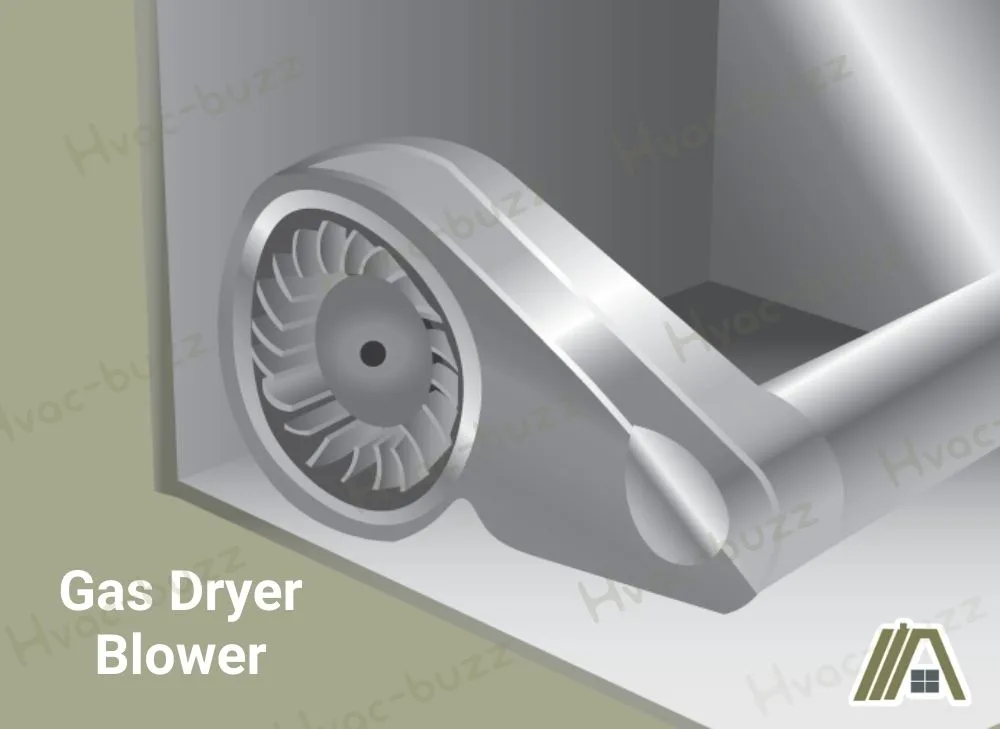
You will need to get into the dryer to see the blower at the bottom of the case, which can be quite invasive. Lint and dirt can create blockages for the blades, so you will need to clean the machine.
9. Ignitor Isn’t Functioning Properly
The ignitor is the gas dryer equivalent of the heating element in electric dryers. This component uses electricity to heat, which signals gas to be released into the assembly, where it can be burnt for heat.
So, if the ignitor isn’t working properly, then the heat to dry your clothes is compromised. The ignitor itself may be the problem if it’s faulty or the filament is damaged, or it could be one of the other components linked to its operation.
You may need to check your wiring and electricity supply to the dryer, as the ignitor relies on this to produce heat to burn gas. If this is unstable, the ignitor may not heat properly or long enough.
The heat supply may be cutting out inappropriately because of a problem with the flame sensor or thermostat.
Even the gas valve can be a problem if they are not opening properly to let enough gas through.
Your dryer cannot function correctly or within the expected timeframe if the heat supply is not normal. The solution to most of these issues is likely the replacement of the part.
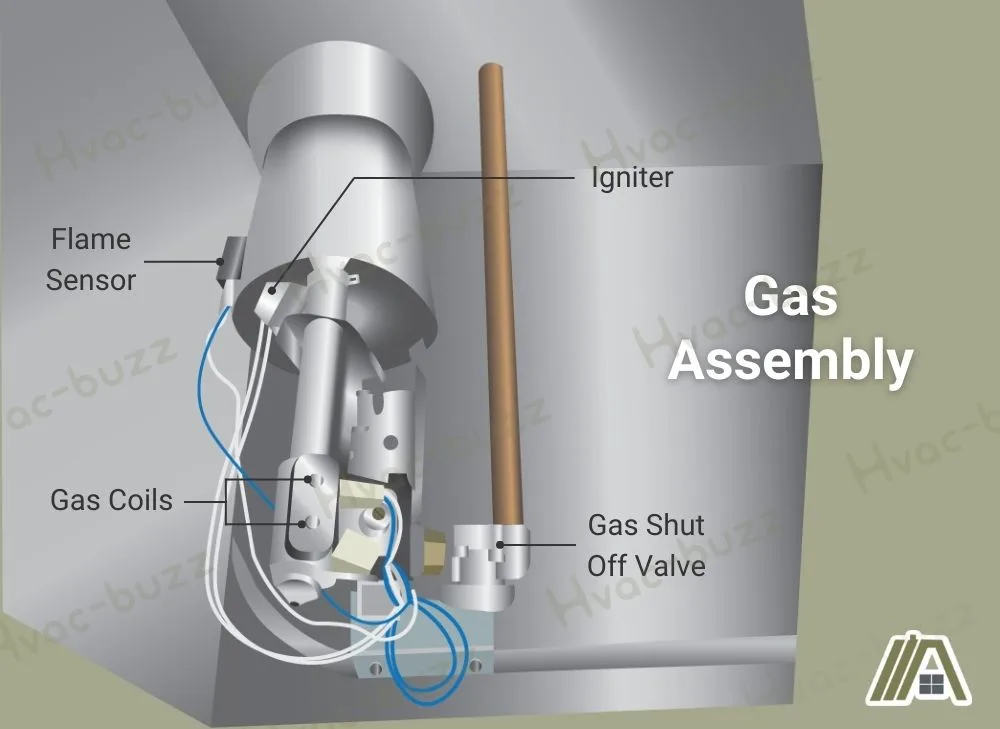
10. Gas Supply Is Intermittent
An intermittent gas supply might result from a faulty gas connection or a problem with the gas valves.
The connection could be damaged or wasn’t attached securely on either end of the gas pipes, meaning that the gas flow is not stable.
The gas valves might not open properly because of age, damage, or dirt. If the valves aren’t opening to let gas through, you can have heat problems.
The ignitor can glow, but you won’t get the heat without the gas. This might also not turn off the dryer if the ignitor is on and the gas is registering as being able to come in. The problem is that with no gas, you get no heat.
The air will still flow through the machine, and the drum will still tumble, but heat is the major contributor to the drying process. Your clothes will take forever to dry without the steady and managed heat in the appliance.
11. Too Little Gas Is Supplied
There can be a problem with the gas supply for a few reasons. You might have an issue with dirt in the gas pipes, or your gas supply might be blocked or running low.
Dirt can build up in the gas valves, gas coils, or burner bar, meaning less gas can get through because of obstructions. The valves can also fail mechanically, meaning they don’t open properly to permit the gas through.
These issues will likely result in a whistling sound as pressured gas is forced through a reduced aperture, much like a whistling kettle.
If gas is not flowing freely into the dryer, the gas that is being burned at one time is lower than normal. This means that less heat is being produced. You will need to clean out the dryer and gas assembly.
You should also check your sediment trap, which helps keep dirt out of the dryer.
If your gas is running low, there simply may not be enough to keep the pressure up correctly in the pipes. I would expect the dryer heat supply to cut off entirely during the cycle.
12. Insufficient Combustion Air Supply
Gas dryers require oxygen to ignite their fuel for heat energy. This is what we refer to as combustion air.
The gas fuel mixes with oxygen in an exothermic reaction, producing heat and several combustion gases.
A certain level of oxygen is required for complete combustion. If your dryer doesn’t have enough combustion air, this will lead to incomplete combustion. Incomplete combustion is less efficient, so the process produces less heat.
This means that your dryer will not be getting as much heat as expected from optimal functioning, which can slow the drying process. As a result, the dryer will need longer to perform the same task.
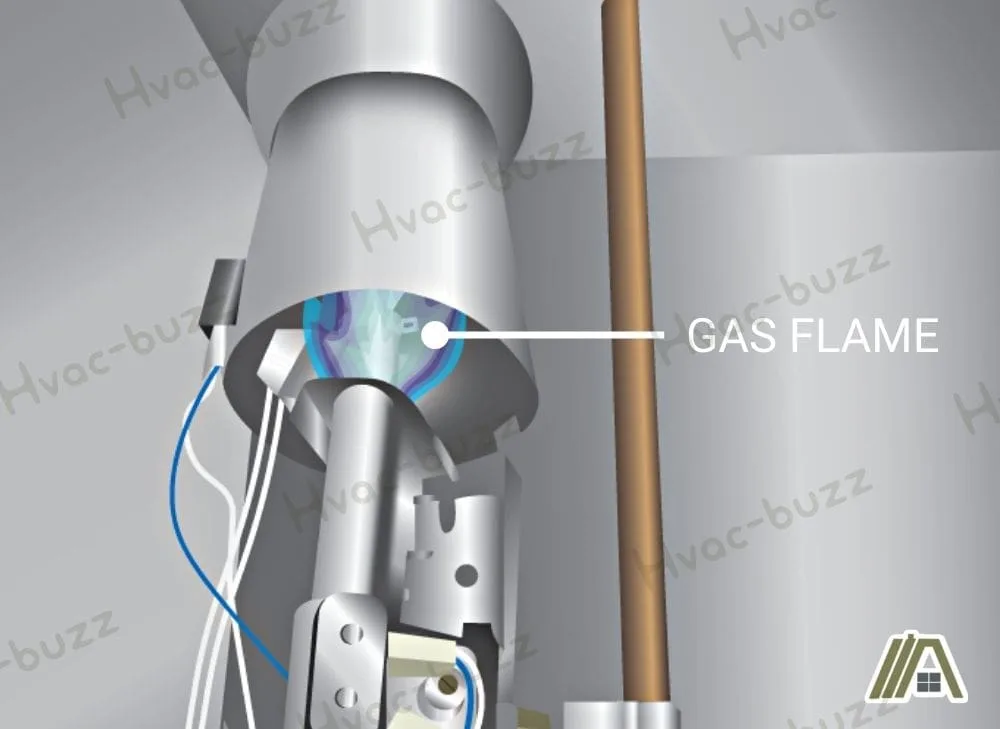
Aside from less heat, there are other consequences that follow the narrative of why gas dryers are considered dangerous. A dryer without enough combustion air will also produce more carbon monoxide, meaning there is a higher risk if something goes wrong with the dryer and its venting system.
Additionally, if there is insufficient combustion air, it might be because of a nearby exhaust system. This can create a backdraft that draws air and the higher amounts of carbon monoxide into your home.
